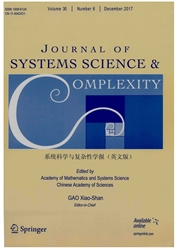

 中文摘要:
中文摘要:
Since mechanical loads exert a significant influence on the life span of wind turbines, the reduction of transient load on drive-train shaft has received more attention when implementing a maximum power point tracking(MPPT) controller.Moreover, a trade-off between the efficiency of wind energy extraction and the load level of drive-train shaft becomes a key issue. However, for the existing control strategies based on nonlinear model of wind turbines, the MPPT efficiencies are improved at the cost of the intensive fluctuation of generator torque and significant increase of transient load on drive train shaft. Hence, in this paper, a nonlinear controller with variable parameter is proposed for improving MPPT efficiency and mitigating transient load on drive-train simultaneously. Then,simulations on FAST(Fatigue, Aerodynamics, Structures, and Turbulence) code and experiments on the wind turbine simulator(WTS) based test bench are presented to verify the efficiency improvement of the proposed control strategy with less cost of drive-train load.
 英文摘要:
英文摘要:
Since mechanical loads exert a significant influence on the life span of wind turbines, the reduction of transient load on drive-train shaft has received more attention when implementing a maximum power point tracking U+0028 MPPT U+0029 controller. Moreover, a trade-off between the efficiency of wind energy extraction and the load level of drive-train shaft becomes a key issue. However, for the existing control strategies based on nonlinear model of wind turbines, the MPPT efficiencies are improved at the cost of the intensive fluctuation of generator torque and significant increase of transient load on drive train shaft. Hence, in this paper, a nonlinear controller with variable parameter is proposed for improving MPPT efficiency and mitigating transient load on drive-train simultaneously. Then, simulations on FAST U+0028 Fatigue, Aerodynamics, Structures, and Turbulence U+0029 code and experiments on the wind turbine simulator U+0028 WTS U+0029 based test bench are presented to verify the efficiency improvement of the proposed control strategy with less cost of drive-train load. ? 2017 Chinese Association of Automation.
 同期刊论文项目
同期刊论文项目
 同项目期刊论文
同项目期刊论文
 Cost-benefit Analysis Method for Optimizing Spinning Reserve Requirements with Consideration of Wind
Cost-benefit Analysis Method for Optimizing Spinning Reserve Requirements with Consideration of Wind A Novel Control to Achieve Optimal Reduction of the E-Cap’s Ripple Current for Discontinuous Conduct
A Novel Control to Achieve Optimal Reduction of the E-Cap’s Ripple Current for Discontinuous Conduct Design of robust H-infinity filters for a class of uncertain nonlinear neutral stochastic systems wi
Design of robust H-infinity filters for a class of uncertain nonlinear neutral stochastic systems wi An Integrated Approach to Global Synchronization and State Estimation for Nonlinear Singularly Pertu
An Integrated Approach to Global Synchronization and State Estimation for Nonlinear Singularly Pertu ::H:Composite:H:: ::H:state:H:: ::H:feedback:H:: ::H:of:H:: ::H:the:H:: ::H:finite:H:: ::H:frequency
::H:Composite:H:: ::H:state:H:: ::H:feedback:H:: ::H:of:H:: ::H:the:H:: ::H:finite:H:: ::H:frequency Exponential stability of uncertain switched nonlinear time-delay systems with state-dependent switch
Exponential stability of uncertain switched nonlinear time-delay systems with state-dependent switch Decomposition approach to exponential synchronisation for a class of non-linear singularly perturbed
Decomposition approach to exponential synchronisation for a class of non-linear singularly perturbed Analysis on factors affecting the distribution of operational angle of attack of blade element for v
Analysis on factors affecting the distribution of operational angle of attack of blade element for v A novel method for fault detection in singularly perturbed systems via the finite frequency strategy
A novel method for fault detection in singularly perturbed systems via the finite frequency strategy Robust quantized output feedback control for uncertain discrete time-delay systems with saturation n
Robust quantized output feedback control for uncertain discrete time-delay systems with saturation n Two new upper bounds of the solution for the continuous algebraic Riccati equation and their applica
Two new upper bounds of the solution for the continuous algebraic Riccati equation and their applica Accelerating average consensus by using the information of second-order neighbours with communicatio
Accelerating average consensus by using the information of second-order neighbours with communicatio 期刊信息
期刊信息
